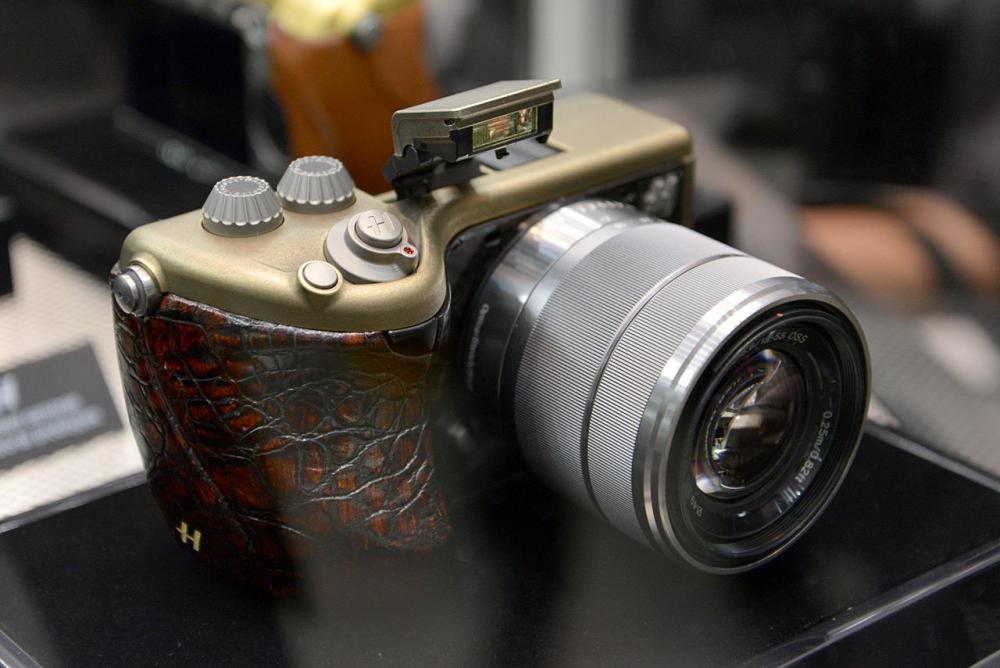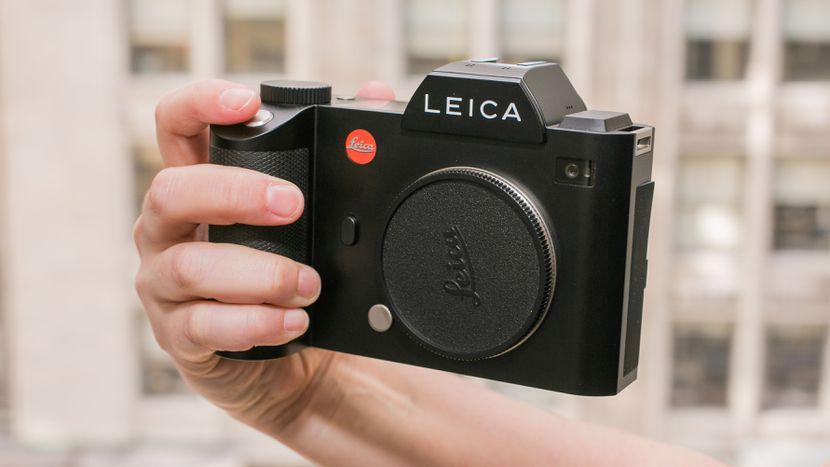-
Posts
778 -
Joined
-
Last visited
Content Type
Profiles
Forums
Articles
Everything posted by Robert Collins
-
I still think you are missing the fundamental reasons why the Nikon lens roll out will be faster than Sony. Sony was first to mirrorless full frame. As such all the lenses (designed to work efficiently on the mount) had to be redesigned virtually from scratch for two reasons. 1) To incorporate 'stepper motors' for fast and efficient 'CDAF' which is combined with 'on-sensor' 'PDAF' (which is inherently less efficient than a dedicated PDAF array you find on DSLRs). Of note the Sigma ART lenses for FE mount didnt add these motors and people have found their af relative poor on Sony A7x. 2) Lens need to be optically redesigned to take advantage (mostly wide angle) of the much shorter registration distance. As an example the upcoming Laowa 10-18mm FE weighs 40% of Canon's 11-24. And redesigning a lens from scratch takes quite a long time - two years to production I have read. But once they have done that for Sony FE, they dont have to do it all over again for Nikon Z mount. The registration distance is near identical and Nikon will use a combination CDAF/OSPDAF focusing system. All they have to do is change the mount which is trivial for a manual focus lens, more difficult for af lenses unless Nikon licenses the mount details. As an example, The Fuji X mount was launched at the beginning of 2012 and Zeiss introduced totally new lenses - the Touit line - for Sony E and Fuji X in September.
-
I dont think the opening will be anything like as large - 62mm - that people have guessed from some grainy photos. My guess is that it will be between the E mount 46mm and Canon EF 54mm. By far the largest number of sales for the Z mount over time will be APS-C cameras. And it is terribly inefficient making a 62mm diameter mouth opening to accommodate a sensor with a 27mm diagonal.
-
I am not sure the concept of crippling the video of a 'MILC' to protect your high end video gear actually makes any economic sense in the current market. It seems to me that MILCs are something of a sweet spot for video because they are video cameras largely paid for by still photographers in large numbers. And if you consider say a Sony A9 can shoot 20fps, FF, 24mp in 12 bit 'real' raw for US$4k - you can imagine what the possibilities are for video going forward. Seems to me that crippling a MILC to protect your cinema cameras is rather akin to crippling a mobile phone camera to protect your compact cameras.
-
Actually,, I have a different reason for thinking that it 'wont' take Nikon years to catch up 'Sony' with lenses. The key point with mirrorless lenses is that they need different af motors to pure 'pdaf' lenses (of DSLRs) to take advantage of the 'pdaf' plus 'cdaf' fine tuning of mirrorless lenses. The Nikon 1 had excellent on sensor pdaf because the sensors were built by Aptina which had on sensor pdaf tech. Aptina agreed a cross licensing patent deal with Sony (and was subsequently taken over by On Semi who no longer makes image sensors for dedicated ILCs). Sony took that tech and used it in their second generation A7x series. Nikon will presumably license the same tech from Aptina/Sony for their mirrorless. This is a long winded way of saying that Nikon's mirrorless af will likely be very similar to Sony's. So I dont really see any particular reason why 3rd party manufacturers of Sony FE mount lenses shouldnt be able to fairly quickly come up with Nikon Z mount versions. So Sigma (well sort of), Tamron, Samyang and Zeiss Batis (?). Now that is 20 lenses that could be introduced in less than a year.
-
Well its all good speculation. I certainly dont think Nikon would introduce a poor camera for their first serious mirrorless but I think it will be a 'solid' entry rather than anything too groundbreaking. Two reasons... 1) Timing. I think if Nikon had a mirrorless up their sleeve that would 'blow away' Sony they would have already released it much earlier. The timing looks entirely 'defensive' to me. Nikon 'needs' FF mirrorless 'now' in response to the success of Sony's A7x3 cameras or risk eroding their client base.. 2) Marketing 'lite'... Look at this photo taken at a marketing shoot.... This is marketing 'lite' - it is far more Nikon 1 than D850. This girl is young, female and appreciates that the mirrorless is lighter. She doesnt go out in the sun (or the rain) or go parkour jumping.....
-
I think the current general narrative - Nikon v Sony - FF mirrorless isnt that productive. Sony has set the bar in terms of 'features' and 'value' incredibly high to think that Nikon will beat it with their first mirrorless offering. From Nikon's perspective the most important thing is that they get their installed customer base on board for their mirrorless product and dont continue to leak elsewhere. From that perspective, it is incredibly important that their adapter works incredibly well (or certainly much better than a Nikon lens on a Sony - which certainly isnt asking a lot
-

Editing Laptop: Macbook Pro 15" or Dell XPS 9570 (I9
Robert Collins replied to smoke23's topic in Cameras
-
True but Canon mirrorless market share is built on US$600 mirrorless and not US$2-3k mirrorless. Nikon 1 was always pitched at women (remember the pink variant?) I just find it surprising that it is not being pitched at the 'aspiring pro' market as an alternative to a DSLR.
-
I find it interesting that Nikon's marketing of the mirrorless (at least in Japan) is aimed at women (youngish). It is a far cry from their marketing of their other full frame offerings.
-
He was referring to cmos image sensors in general which are used in a wide variety of industries - automotive, mobile phone, pc web cams. security devices...
-
This is simply a non-sequitur. First of all there 'isnt' an off the shelf sensor. But then there 'is' but you need to add some tech to turn the sensor into a camera - 'no shxx sherlock!!' But to explain my point. It is generally thought that the GH5S, BMPCC 4k and Z Cam 2e all use the same generic sensor. The Sony IMX294CJK sensor (which is part of the Starvis line developed originally for security cams.) Here are its specs.... https://www.sony-semicon.co.jp/products_en/IS/sensor0/img/product/cmos/IMX294CJK_Flyer.pdf Now you might know that amongst those 3 cameras the Z Cam 2e is the only one to offer 4k 120fps. But if you read the 'sensor specs', you will see that 120fps 4k can only be achieved from a 10 bit signal... And sure enough if we look at the Z cam 2e specs.... 120fps only comes from a 10 bit signal....
-
Of course there are... To quote Sony... "The third category of sensors is completely generic – the sensors are created for use internally and to sell externally, to anybody. China or Taiwan or wherever.” You can literally pick up a catalog of sensors from Sony, Samsung or Omnivision for that matter. What Nikon does - getting a custom build with their design exclusive to them - is the 'exception' rather than the 'rule' 'Custom builds' are expensive to design and even more expensive to build because you both need a separate manufacturing line and you then have to ramp up to an acceptable yield. If you consider that the cost of a generic M43 sensor is US$40-50 a piece and you expect to sell 100,000 cameras, your spend on sensors is roughly US$4.5m. Most components in cameras are 'generic' or 'off the shelf'. Shutters by Nidal Copec, EVFs from Epson etc...
-
Honestly, when I think Hasselblad, I simply cant get the picture out of my mind of those Sony Nex cameras they rebranded..... Thankfully they have been put out of their misery by DJI who will probably do great things with the brand (as they are more innovative than all the other camera brands put together.)
-
Honestly, I have quite a lot of qualms with the whole concept of reinstating him. This has nothing to do with the rights and wrongs in this case - he shouldnt have been sacked in the first place (from what I can see.) It is more to do with whether 'everything should be judged by who can shout loudest in the internet court of public opinion' It just seems an incredibly crappy way about going about things....
-
Well sort of. (I could also argue that Leica has always had the lens release button on the right side and Pentax used to have the button on the wrong side and have now got it on the right side.) My guess would be that Canon and Nikon's 'tradition' for having the lens release on the 'wrong' side stems from the fact that when it was first introduced, it 'actually released the lens'. So if you accidentally pressed it the lens would literally fall off. So the lens release button was placed in the most inconvenient place possible. But seriously.... take the 1kg Leica SL..... (looks a bit like the Nikon mirrorless) ....try putting the lens release on the left hand side and think about holding it with your left hand to put a lens on with your right hand. Totally daft right?
-
Huh? Cameras are designed to be held one handed on the right hand side - that is why they have a grip there (and the lens release should be there.) Holding a camera on the short left hand side is uncomfortable because the left hand generally holds the lens 'which is convenient for taking the lens off and putting it on' I know because I used to have an Olympus that had the lens release on the wrong side which was very stressful. In fact, I would often have to spend a day in bed after changing lenses, simply to recover.
-
Yes, sure. And while I dont like the lens release located on that side of the lens - to change lenses. It looks as though they have located 3 function buttons on the other side of the lens to use while shooting... ...And you certainly dont want someone to confuse a function button with a lens release button!!
-
True. DJI's mount already has one more pin than them, though. I notice they chose not to correct two previous problems. 1. The connector pins remain on the top of the mount rather than the bottom 2. The lens release button is on the wrong side especially for mirrorless.
-
Interesting they have increased the pin count....
-
I am sure that hybrid mirrorless sales are largely driven by still shooters though. In fact, from a video/film centric view, I think the whole concept of mirrorless hybrid is driven by the fact that you get a very capable video camera that is heavily 'subsidized' by still shooters.
-
DPreview did a poll of what people want to see in Canon and Nikon FF mirrorles (they got nearly 4,000 replies.) Not surprisingly 'full compatibility with existing lenses' came out on top - so these systems will live or die through the quality of their adaptors. (I really hope that Nikon doesnt go with a translucent mirror design.) IBIS also scores highly (not surprisingly.) Also note that 'compact size', small affordable primes and lightweight scores high. (Fast primes, substantial grip - not so much.) So I wonder if the Nikon bigger mirrorless is going to be that successful.
-
They definitely limited to slower speeds of say 1/2000th. But I dont see that as a problem for 'stills' with a 'drone'. The shutter limitation of 1/2000th of a second for stills only really occurs when you are trying to use a very fast lens - say 85 1.4 - 'wide open' in 'bright sunlight'. If you stop down to f5.6 you wont have a problem. You are not trying to get shallow dof with a drone. And I assuming the Mavic Pro has variable aperture.
-
I think it is highly unlikely Olympus would go full frame with cameras. Their imaging division has only made a profit once in the last 10 years. Having abandoned 4/3 and never made a profit with M43, I think shareholders would literally lynch the management if they decided to diversify into a new camera mount. It is quite possible though that Olympus could start making FF lenses for existing mounts - Sony FE or Nikon Z. Afterall their key expertise is optics and they make great lenses.




.thumb.jpg.0212082f5feeeb86046872776a200e64.jpg)
.thumb.jpg.d8a3777c70a91102c91b216b57d6f795.jpg)


.thumb.jpg.b0a16a3e56faf312636e056f9eee257c.jpg)
.thumb.jpg.a019c289b19a50606656f21cebb1558f.jpg)